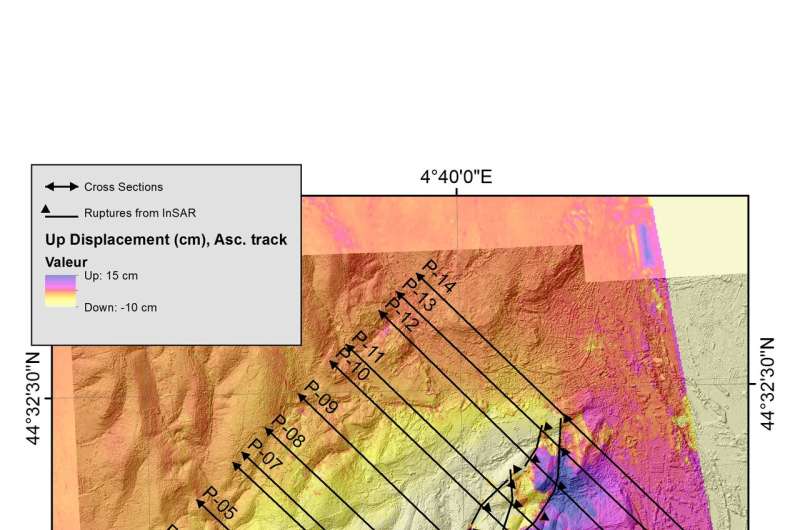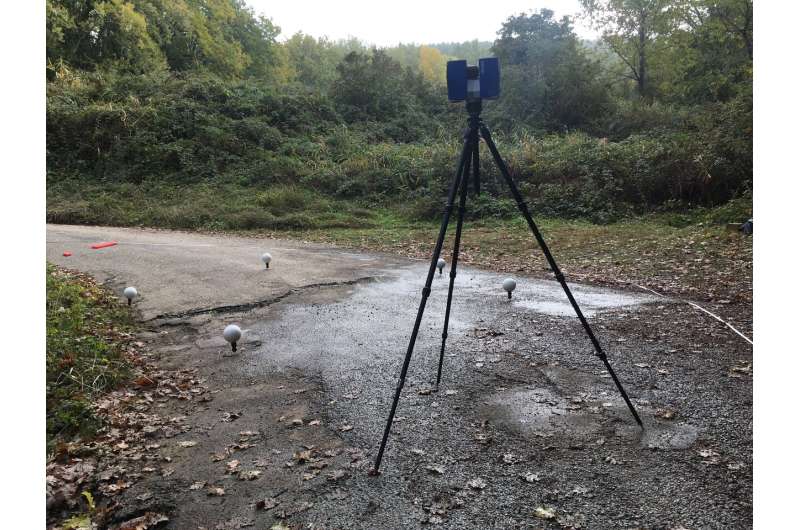Surface displacement mapped using InSAR satellite imaging data. Along the fault, the ground was either raised (southeast) or collapsed (northwest). The star designates the epicentre. Credit: Jean-François RITZ et al
On 11 November 2019, a magnitude 5 earthquake occurred near the village of Le Teil in the Rhône River Valley in southern France, producing an unexpected surface rupture with ground displacement.
For the first time in France, the CNRS, IRSN, IRD, Université de Montpellier, Université Côte d'Azur and Terradue had the opportunity to use all modern seismological, geodetical, and geological techniques available to study this historically unprecedented seismic event.
The data, published on 27 August 2020 in Communications Earth and Environment, reveals that the earthquake was caused by the reactivation of the ancient La Rouvière fault. The fault formed during an extensional tectonic period some 20-30 million years ago during the Oligocene epoch, and was no longer considered to be active.
During the Le Teil earthquake, the fault experienced a reverse faulting movement (compression) with an average surface displacement of about 10 cm both vertically and horizontally. Scientists estimate that the event nucleated at a shallow focal depth of approximately 1 km, which explains why the rupture along the fault was able to reach the surface and cause considerable damage despite the moderate-magnitude (the accurate position of the earthquake's focus is presently being studied by another research team).
The results raise the possibility that other faults could be reactivated in France and Western Europe and produce surface displacements, whereas the risk of earthquakes with surface rupture was until now considered as highly improbable. To better assess the probability of such events, several teams of scientists in France are performing palaeoseismological investigations looking for evidence of past earthquakes along such faults.
A field survey measured the ground displacement along the surface rupture. The photograph shows a laser scanner used to measure ruptures and fissures. This method, together with InSAR data, identifies localised deformation right on the fault (~45%) and deformation distributed off-fault (~55%). Credit: © Jean-François RITZ / Géosciences Montpellier / CNRS Photothèque
More information: Jean-François Ritz et al. Surface rupture and shallow fault reactivation during the 2019 Mw 4.9 Le Teil earthquake, France, Communications Earth & Environment (2020). DOI: 10.1038/s43247-020-0012-z
Provided by CNRS

























